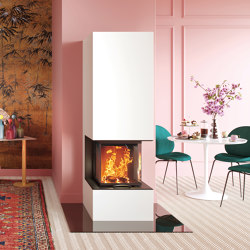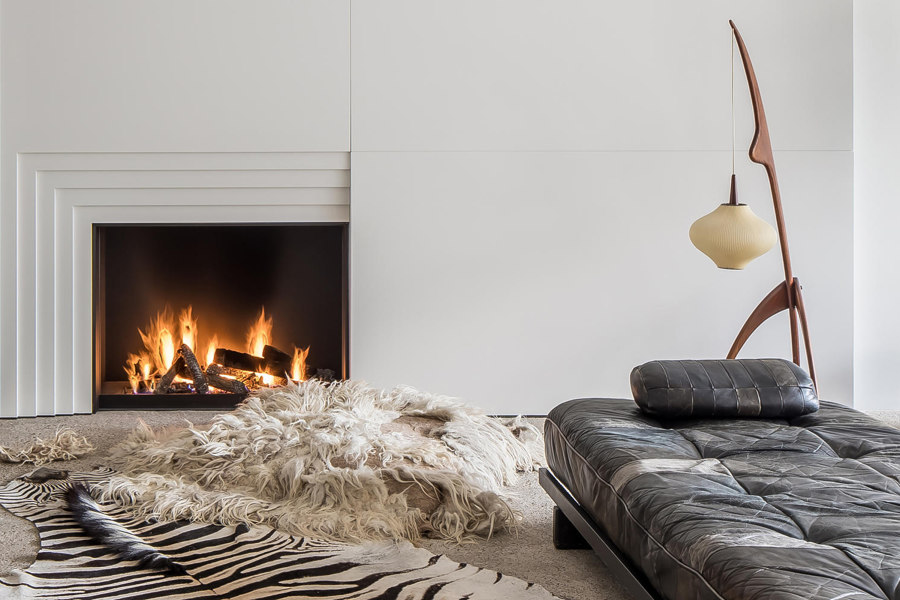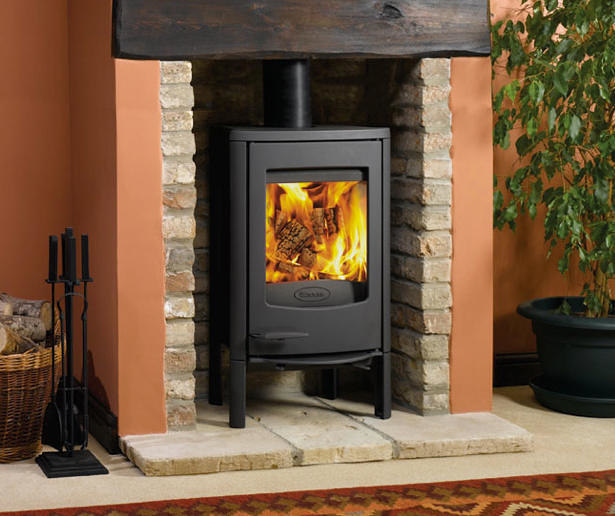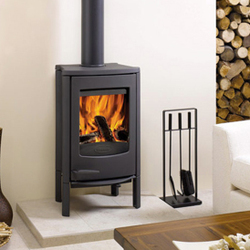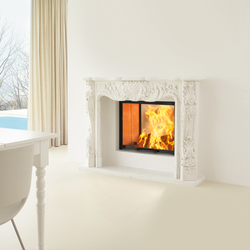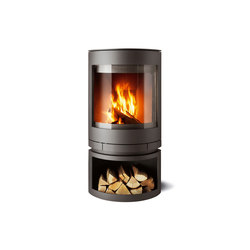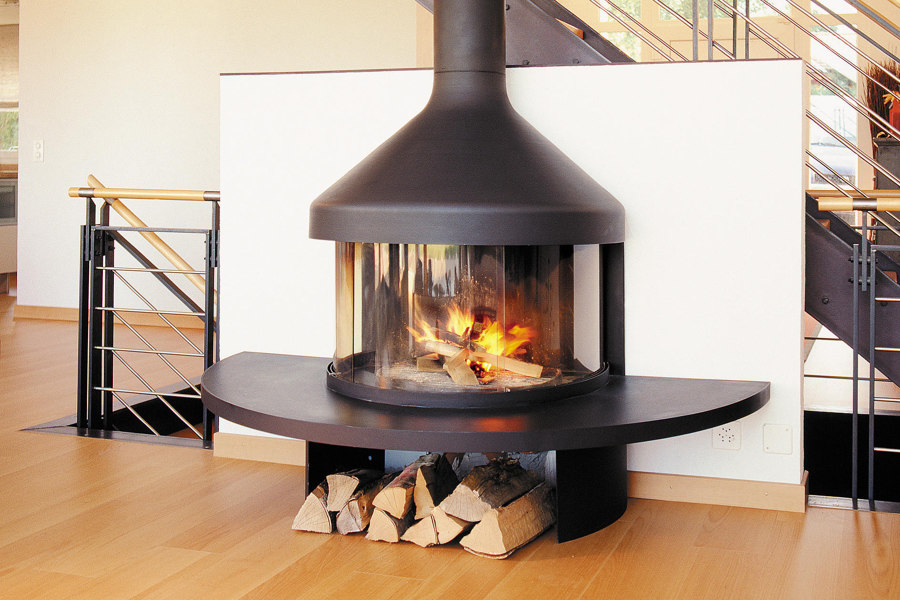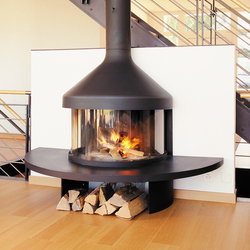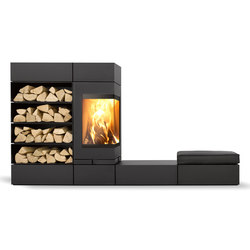Will sustainability cause home fireplaces to burn out?
Texte par James Wormald
16.01.23
The great warmth and glow of a cosy home fireplace is one of winter’s greatest pleasures, but can burning fuel ever be part of a carbon-neutral future?
Corner wood-burning fires like those from Austroflamm present a mesmerising dance of flames to various different angles
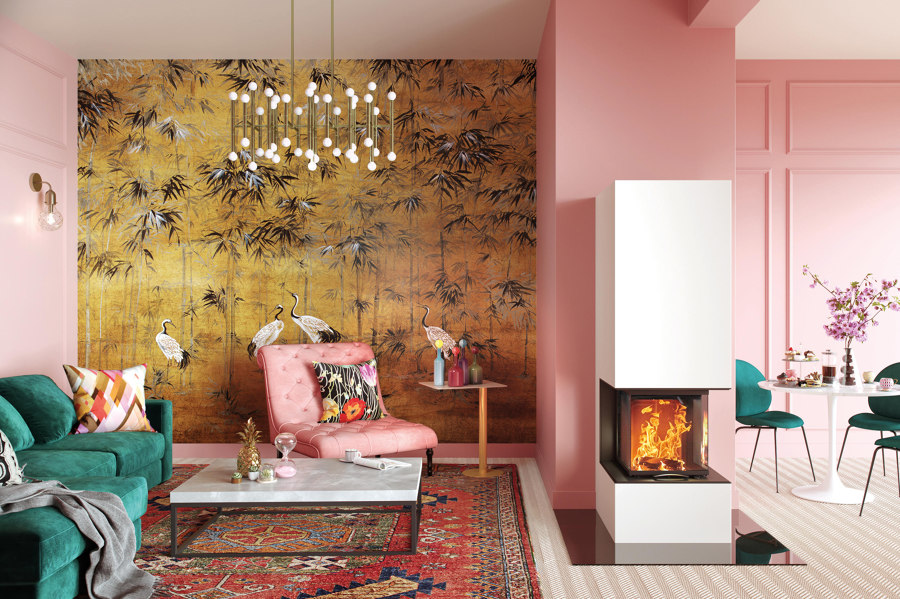
Corner wood-burning fires like those from Austroflamm present a mesmerising dance of flames to various different angles
×Long, white-tipped woodland walks, choosing between snowball battles or snowperson construction, or taking skates down to the local lake. Those in Northern countries will appreciate the appeal of a cold winter’s day. But the best part of an outing surrounded by snow and ice, perhaps, is the part where you come home.
Just the thought of returning to a roaring fire and a hot (possibly chocolate-based) drink can warm up painfully frozen fingers and toes. But is there still room for this idyllic winter scene in our modern carbon-neutral world? Or should we bravely give up on hundreds of millennia spent obsessing over fire, for the good of the planet? Thankfully, these environmentally-friendly fireplaces and fuel-efficient practices mean we don’t need to make that choice.
Natural gas fires like Urban from Metalfire use ceramic logs to fake the look of a real wood-burning fire, but release less pollution
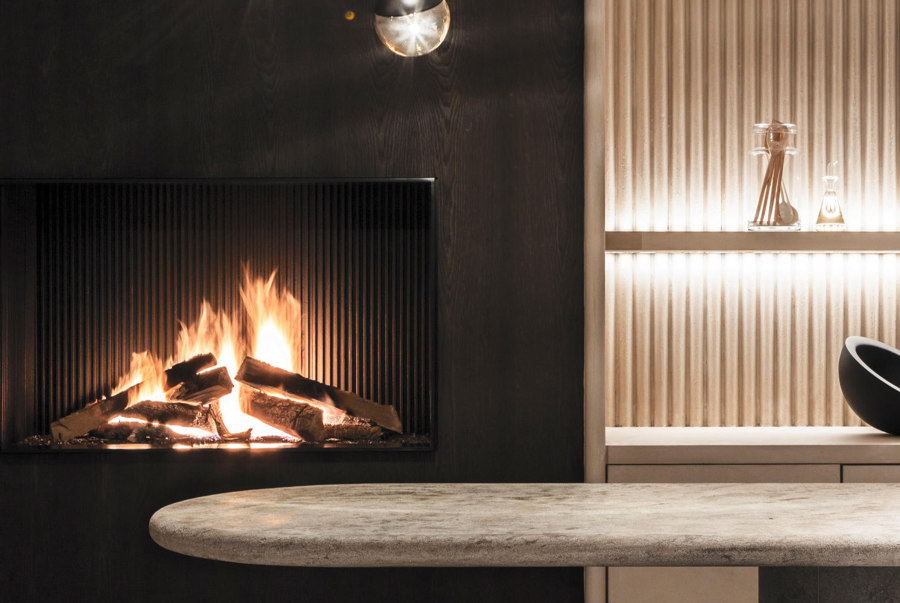
Natural gas fires like Urban from Metalfire use ceramic logs to fake the look of a real wood-burning fire, but release less pollution
×Choosing the right fuel
When you think of traditional fireplaces, you either imagine dirty coal-fuelled fires or more eco-friendly wood-burning stoves, and the right environmental choice is simple. But as many major cities have now banned the use of open wood-fuelled fires, are they really an environmental option? And what are the alternatives?
Gas-fuelled fires, like the Urban fire from Metalfire, are much more energy efficient than wood-burners in regards to pollutants, but ultimately still rely on a non-sustainable fossil fuel. Alternatively, electric fires are perhaps the most sustainable option – assuming the electricity is sourced via sustainable means. But there’s a reason gas fires like Urban feature fake wooden logs, and electric fires recreate ‘realistic’ flames with mirrors and even play audio to accompany the fire. The look of a roaring wood-burning fire may be easy to imitate, but the smoky scent and crackling soundtrack are not.
Closed-door fires like Astroline from Dovre (top) filter out wood-burning pollutants, and flat-faced fires like this from Austroflamm (bottom) can be fitted inside statement mantelpieces
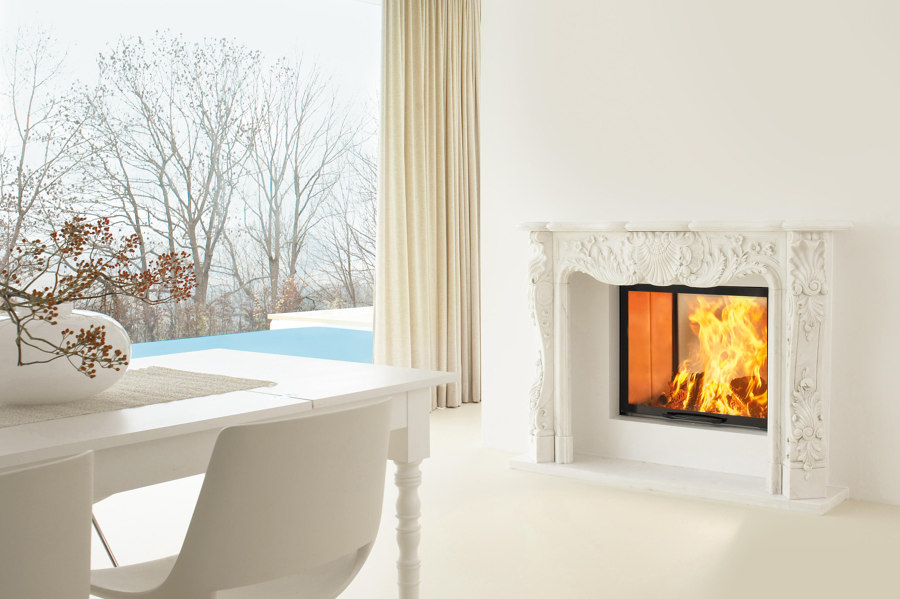
Closed-door fires like Astroline from Dovre (top) filter out wood-burning pollutants, and flat-faced fires like this from Austroflamm (bottom) can be fitted inside statement mantelpieces
×Shut that door!
If the dancing natural flames of an open fire fill you with warmth and wonder, the last thing you’ll want to do is close the door on them, even a glass one. But if wood is your fuel of choice, closed-door ecodesign stoves that filter out pollutants before they escape up the flue are not just an environmental choice. In an urban environment, they might be a legal requirement.
Many major cities have now banned the use of open wood-fuelled fires, so are they really the environmental option?
Closing a door on the flames also greatly improves fire safety too, of course, opening up the option for households with careless long-tailed pets or stumbling children. But that doesn’t mean the rest of the traditional fireplace look has to change. Mantels, whether intricately carved or smooth-edged, increase the presence of a fireplace, and offer a place to hang stockings. Flat-framed fireplaces like those from Austroflamm allow contemporary mantels to surround them neatly, or can fit inside pre-existing ones, retaining the in-demand period feature.
A corner fire spreads heat across this room in Norway (top), without interrupting the view, while turntable stoves like Emotions from Skantherm (bottom) direct it where it’s wanted. Photo: Kjetil Nordø
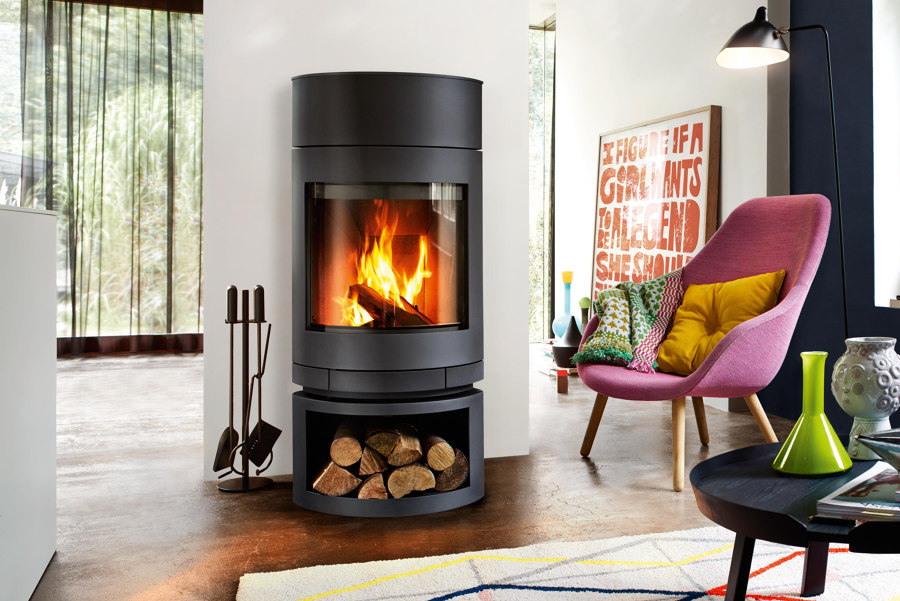
A corner fire spreads heat across this room in Norway (top), without interrupting the view, while turntable stoves like Emotions from Skantherm (bottom) direct it where it’s wanted. Photo: Kjetil Nordø
×Headed in the right direction
Whether natural gas, bioethanol gas, electric, wood or pellet, whichever type of fuel you add to a fire, sustainable options are either already here, or on the horizon. But what else can we do to ensure the fireplaces we have are performing at maximum efficiency?
Fire, of course, is the most important part of a fireplace… but place runs in a close second. Putting stoves in central positions, like at the Vaulalia Retreat in Bjørheimsbygd, Norway, will heat the entire room fairly, while the smaller the chosen room is, the smaller the fire needs to be.
Fire, of course, is the most important part of a fireplace… but place runs in a close second
Traditionally, fireplace locations were decided at the early construction phase, when a chimney breast was drawn and flues combined to flow up to a chimney stack. Alternatively, modern fires like Astroline from Dovre can retain a traditional style with an exposed flue, but position it anywhere on a wall, or even in the ceiling. Meanwhile the pivoting Emotion stove from Skantherm can turn its fire around, either warming a cosy corner quickly, or looking out towards a larger space for bigger gatherings.
The Optifocus fire from Focus has a raised hearth to stop pets or children getting too close (top), and the various storage sections of Skantherm’s Elements fireplace separates wood (bottom)
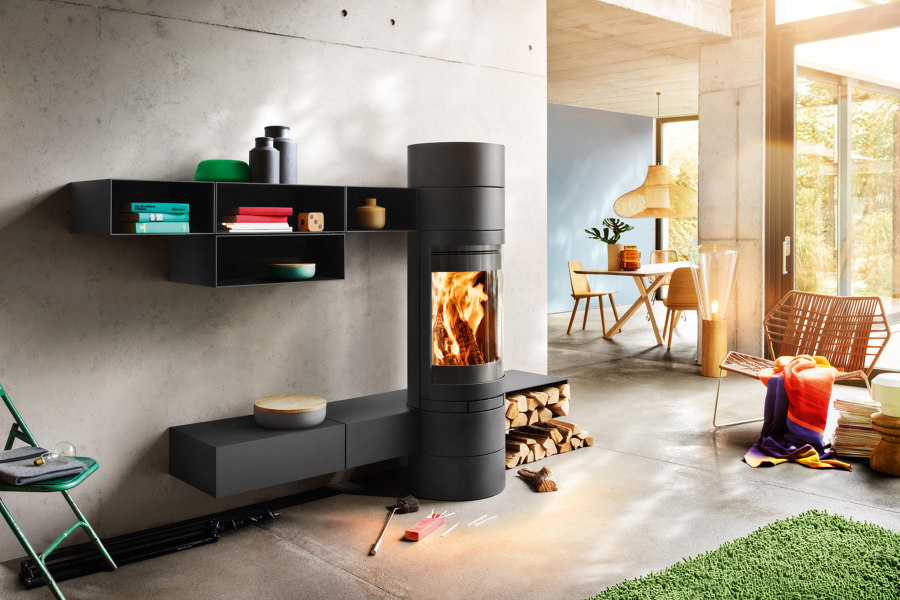
The Optifocus fire from Focus has a raised hearth to stop pets or children getting too close (top), and the various storage sections of Skantherm’s Elements fireplace separates wood (bottom)
×Additional functional and efficient accessories
Sleeker minimalist interiors may prefer the clean-shaven look of a gas-fuelled fire, but for those burning wood, extras like hearths, guards, tools and log stores are necessities. The fireproof natural stone surface of a hearth stops escaping logs or embers burning the carpet, and marks out the surrounding space as a danger zone. While for those who like to use the fire often, log stores with various nearby storage sections like Elements from Skantherm can provide individual spaces for logs, kindling, paper and matches, as well as part-dried wood, still damp from time spent drying outside.
© Architonic
Head to the Architonic Magazine for more insights on the latest products, trends and practices in architecture and design.

